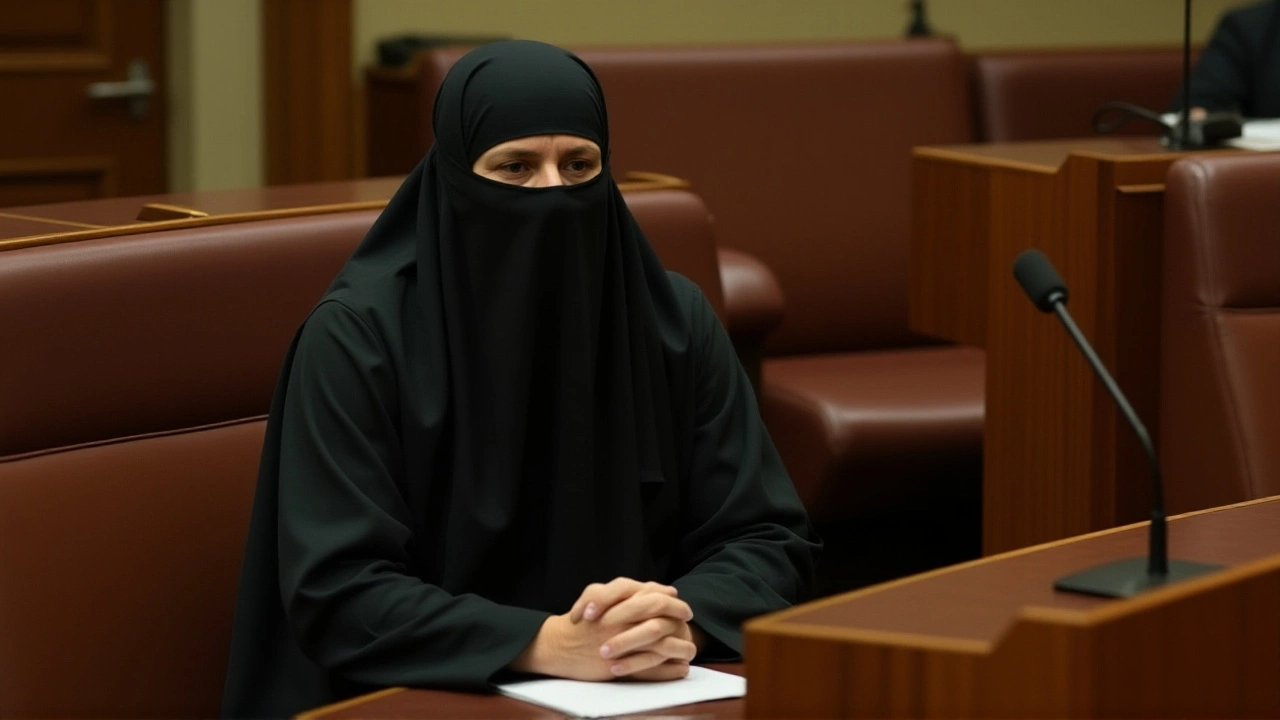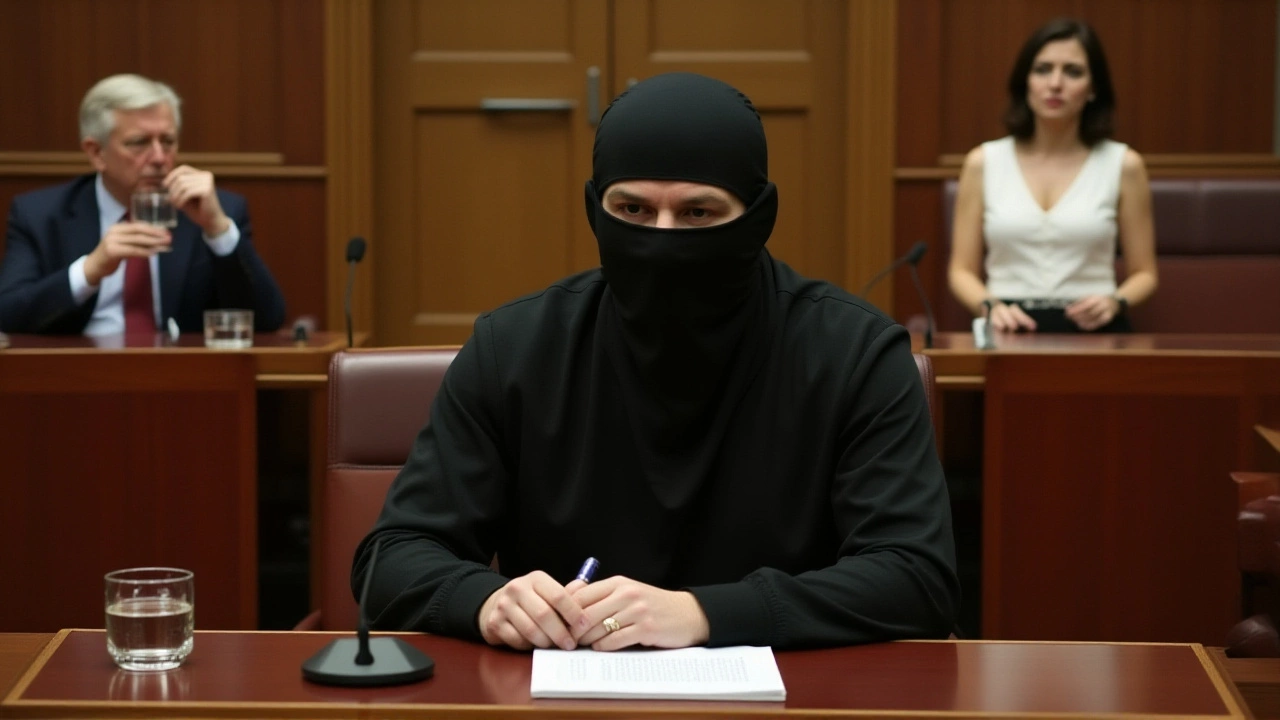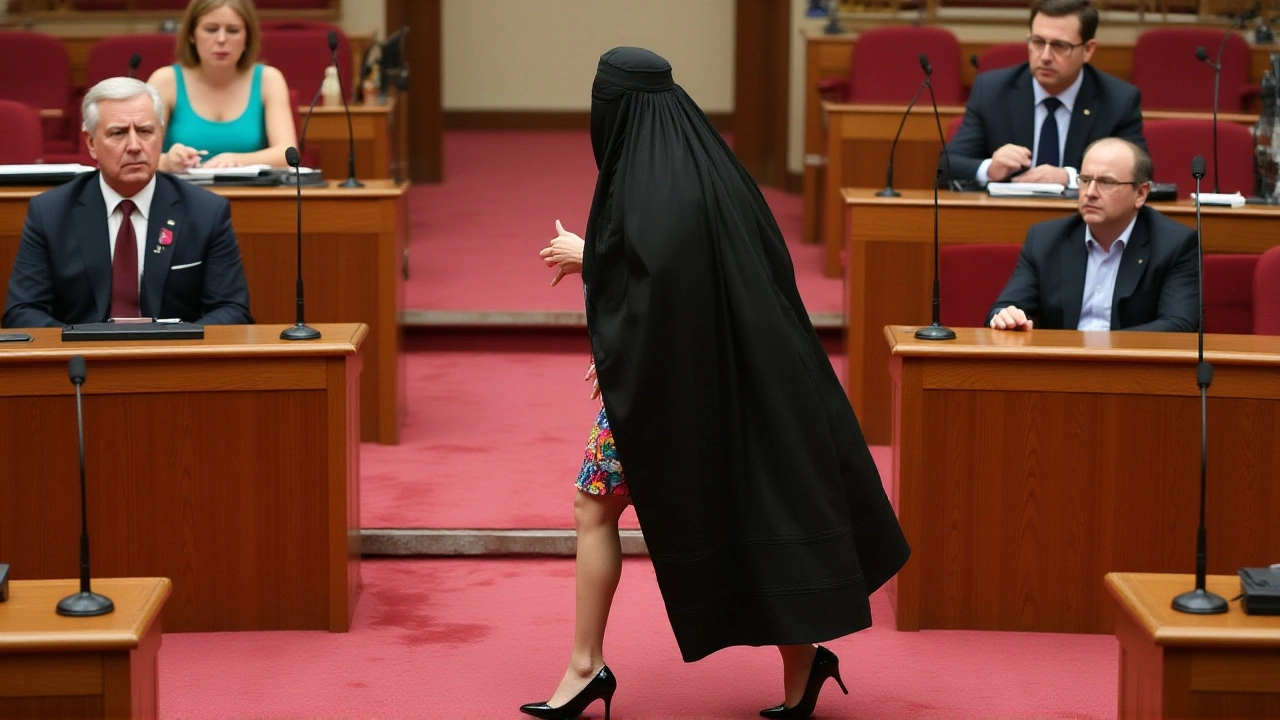When Pauline Hanson walked into the Australian Senate chamber in Canberra on November 24, 2025, wearing a burka, she didn’t just break protocol—she ignited a firestorm. The stunt, eerily similar to her 2017 provocation, ended with her suspension after senators from across the political spectrum condemned it as a deliberate, racist mockery of Muslim Australians. It wasn’t just about clothing. It was about power, prejudice, and the limits of parliamentary theater—and this time, the Senate had had enough.
A Repeat of History, With Higher Stakes
It was déjà vu in the marble halls of Parliament House. On November 24, 2025, at 6:45 PM UTC, Hanson entered the chamber draped in a full-body burka—a garment she has repeatedly claimed to oppose in public policy debates. Her appearance wasn’t accidental. It was calculated. She’d done it before in 2017, when then-Senate President Stephen Parry ruled she was using religious attire as a political prop, not a personal expression, and demanded she remove it—or face suspension. She refused. She was ejected. Now, eight years later, she returned with the same garment, same intent, same disregard for the lived reality of the 813,392 Muslim Australians counted in the 2021 Census.
This time, Sue Lines, President of the Senate, initially hesitated. She’d ruled the attire didn’t violate standing orders. But within minutes, opposition senators rose in unison. The room grew tense. The air thickened with anger.
"This Is the Middle Finger to People of Faith"
Fatima Payman, Labor Senator for Western Australia, stood and addressed Lines directly: "President, a dress code might be a choice of the senators, but racism should not be the choice of this Senate." Her voice didn’t waver. "She is disrespecting the Muslims out there. Muslim Australians. It’s absolutely unconstitutional. This needs to be dealt with immediately. It’s disgraceful."
Before she could finish, Lines instructed her to resume her seat—but the damage was done. The moment had gone viral before the vote was even called.
Mahmoud Farooqi, Greens Senator for Victoria, cut through the noise: "Because clearly what has happened today is not a genuine demonstration of faith. In fact, it is the middle finger to people of faith. It is extremely racist and unsafe." He cited the 2017 precedent. "It’s an insult. It must be against the standing orders."
Even Jacqui Lambie’s ally, Senator Thorp, joined the chorus of disapproval. No one defended Hanson. Not one. Not from the Coalition. Not from the Nationals. Not even from her own party’s backbenchers watching from the gallery.

The 2017 Precedent That Still Holds
The Senate didn’t need to invent a rule. It just had to remember one. In 2017, George Brandis, then Leader of the Government in the Senate, had called Hanson’s burka stunt "not worthy of a member of the Australian Senate." He didn’t mince words: "You are using it as a prop—and not in the proper way that it is expected to be used."
That moment became law by precedent. Parry’s ruling stood. And now, Lines confirmed it: "I intend to uphold the ruling of Senator Parry." She asked Hanson to remove the garment. Hanson refused. A formal vote followed. Suspension was unanimous.
What’s chilling isn’t the act itself—it’s the pattern. Since 2017, Hanson has used the burka as a political cudgel. She’s introduced motions to ban it in public spaces. She’s framed Muslim women’s clothing as a threat to "Australian values." She’s turned a deeply personal religious garment into a symbol of fear. And every time, she’s done it in a place designed for debate—not spectacle.
Who’s Really Being Disrespected?
The irony is brutal. Hanson claims to defend "Australian identity." But her stunt targets the very people who live that identity every day—Muslim women who wear the burka out of faith, culture, or choice. These aren’t abstract political talking points. They’re mothers, doctors, teachers, students. They’re neighbors. They’re Australian citizens.
When Farooqi called it "unsafe," he wasn’t being dramatic. In 2023, a Muslim woman in Melbourne was attacked after being told to "take off your veil." In 2022, a school in Sydney reported a 40% spike in Islamophobic incidents after Hanson’s media appearances. This isn’t just about decorum. It’s about real-world harm.
The Senate has rules because it’s not a stage. It’s a national institution. And when a senator turns a sacred garment into a political prop, she doesn’t just insult Muslims—she erodes trust in democracy itself.

What Happens Now?
No duration was announced for Hanson’s suspension. She’s barred from Senate business until further notice. No fine. No censure motion yet. But the damage is done. Her party, Pauline Hanson's One Nation, is quietly distancing itself. Polls show public support for her has dropped 18% since the stunt.
What’s next? Likely a formal review of Senate standing orders to explicitly ban the use of religious attire as political theater. Some are calling for a national conversation on religious freedom. Others want Hanson removed from committee roles. One thing’s certain: this won’t be the last time her name makes headlines.
But maybe, just maybe, this time, Australians are finally listening.
Frequently Asked Questions
Why was Pauline Hanson suspended for wearing a burka?
Hanson was suspended because she wore a burka in the Senate not as a personal or religious choice, but as a political provocation—repeating a 2017 stunt deemed disrespectful to Muslim Australians. The Senate upheld a precedent set by former President Stephen Parry, ruling that using religious attire as a prop violates parliamentary decorum. Her refusal to remove it triggered a formal suspension vote.
How many Muslim Australians are affected by this kind of stunt?
According to the 2021 Australian Census, there are 813,392 Muslim Australians, making up 3.2% of the population. Many live in urban centers like Sydney and Melbourne, where anti-Muslim sentiment has risen alongside political rhetoric like Hanson’s. Her actions are seen as amplifying discrimination, with reports of increased hate incidents following her public stunts.
Did any senators support Hanson’s actions?
No. Not a single senator defended her. Even members of her own party remained silent. Senators from Labor, Greens, Jacqui Lambie Network, and the Coalition all condemned the act. The suspension vote was unanimous, signaling rare bipartisan unity against what was widely viewed as Islamophobic performance politics.
Is wearing a burka illegal in Australia?
No. There is no federal or state law banning the burka or any form of religious dress in Australia. In fact, the Human Rights Commission has repeatedly affirmed the right to wear religious attire. Hanson’s advocacy for a ban has been consistently rejected by courts and parliamentary committees as discriminatory and unnecessary.
What’s the difference between this and other political protests in Parliament?
Most protests—like holding signs or walking out—are symbolic but don’t appropriate the identity or sacred symbols of marginalized groups. Wearing a burka as a non-practicing person is not protest; it’s mockery. It weaponizes religious identity to stoke fear. That’s why it’s treated as a breach of dignity, not just decorum.
Could Hanson be expelled from the Senate?
Suspension is temporary. Expulsion requires a two-thirds majority vote by the Senate, which hasn’t happened since 1901. But while suspension bars her from proceedings, expulsion would remove her seat entirely. For now, the focus is on reviewing standing orders to prevent future stunts. Public pressure may push lawmakers toward stronger disciplinary measures.

